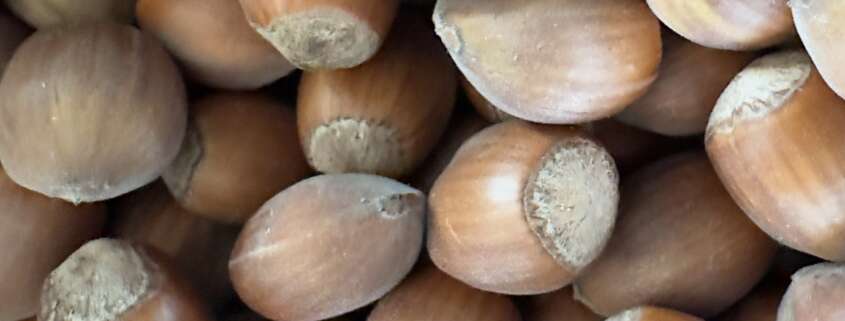The hazel
The hazel tree is lost in the landscape, we no longer notice it because it is so much a part of our daily lives. With a little attention, you will spot its male flowers at the end of winter, and its fruits in September, but it has many other qualities…
The hazel
The hazel (Corylus) is a genus of flowering plants in the Betulaceae family. It’s a complicated last name, but it’s the same as the birch! There are several species of hazel trees, but the general origins of these shrubs are in Europe, Asia, and North America. And for us, it’s a great classic of our countryside!
The most common among us is the common hazel (Corylus avellana). This pretty shrub is native to Europe. It is found in the wild in many regions and not only in France. It is also there in England, Germany, Italy and Spain. It often grows in forests, hedges and woodland areas. Clearly, it is part of the furniture…
Well, for furniture, that’s not its specialty… On the other hand, its wood is used for the manufacture of handicraft objects and kitchen utensils. It’s a really durable wood.
And in the vegetable garden, you can use its shoots to make very pretty stakes, the peas love it!
On the “wild” side, you must have come across it during your walks, but it is… common… As its name suggests, and we end up no longer noticing it, except when it flowers and when it wants to tell us give a few nuts!
The twisted hazel
The twisted hazel tree is called by its Latin name: Corylus avellana ‘Contorta’. It is a cultivated variety of common hazel (Corylus avellana). This shrub has a distinctive growth habit, with twisted, winding branches that give it its characteristic twisted appearance. A sick thing for decoration, it is even more beautiful in winter, without its leaves.If you visit Phantom Manor at Disneyland Paris, look carefully at the green spaces. The twisted hazel finds its place perfectly!!!The exact origin of the ‘Contorta’ variety is not precisely dated, but it was introduced into cultivation at the beginning of the 20th century. This variety is believed to have arisen as a natural mutation of the common hazel tree in England. A weird thing that was then multiplied. Moreover, the twisted hazel tree is generally not grafted. It is often propagated by cuttings to preserve its twisted characteristics.If you still have a little space in the garden, now is the time to transplant it, however, unlike the common hazel tree, do not cut its branches to make stakes, that would be a shame 🤣!
The benefits of hazel
Our common hazel tree has the advantage of having quite a few… Advantages! It is often recommended for its effects on health! And this is the case for its leaves, its nuts or its wood.Hazel leaves can be used to prepare infusions. They are traditionally considered beneficial for their diuretic properties.And what’s more, the young leaves, in spring, can accompany salads or other dishes!The most important… Hazelnuts! They are an excellent source of nutrients, including monounsaturated fatty acids, dietary fiber, protein, vitamins (like vitamin E), and minerals (like magnesium).You just have to take the time to collect them…The vitamin E in hazelnuts is a powerful antioxidant that can help protect the body’s cells from oxidative damage.This means that it’s in your interest to eat them often, if you like hazelnuts… Of course!And for wood, let’s not forget that it is sometimes used to make divining rods, supposed to help locate underground water.Some magic wands, in the Harry Potter saga, were also made of hazel… This is important information 🥴!
Hazel tree pollination
To have hazelnuts, you need good pollination. This is a principle for every plant!Hazel tree pollination is a crucial process for fruit production, as hazel trees are flowering plants that require fertilization to develop their nuts. And with hazel, it’s a little more complicated than for other plants. It’s not the worst, but it requires explanations!Hazelnut trees produce male and female flowers on the same shrub. Male flowers produce pollen, while female flowers have a pistil that includes the stigma (the receptive part), style, and ovary.The male flowers of the hazel tree release pollen, a fine powder containing the male reproductive cells (gametes). Pollen is mainly transported by the wind (anemogamy). It is slightly sticky, which makes it easier to stick to the stigmas of nearby female flowers when the wind blows.And if all goes well, the ovary of the female flower develops into a nut. Each hazelnut contains a seed that develops from a fertilized egg cell.And that’s the job, it’s not very complicated!




Leave a Reply
Want to join the discussion?Feel free to contribute!